Posts Tagged ‘British coin’
BREAKING NEWS: Brand new 50p be released on 31st October to mark Brexit
The Royal Proclamation confirming the new coin has been passed, and that means production can officially begin.
Plans to release special Brexit coins was first announced by former chancellor Philip Hammond in last year’s Budget. But this is the first confirmation from The Royal Mint that the coin is indeed going ahead.
I don’t know about you, but this coin story is one I’ve been watching for a while. And as such, I suspect it will be one of the most eagerly anticipated issues we’ve seen for a while!
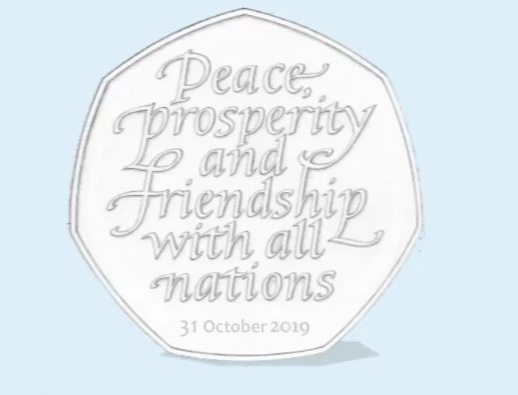
Few details are known about the design of the coin, but we do know that it will feature the inscription: “Peace, prosperity and friendship with all nations”, as well as the historic date the UK is due to leave the EU – 31 October 2019.
A 50p coin was struck when the UK joined the European Economic Community in 1973 and when the UK held the presidency of the EU in 1998. So it only seems fitting one is released to also mark the UK’s departure from the EU. And by marking such a pivotal event in our history, this coin will surely be sought-after by collectors in years to come.
Whilst not many details have been released by The Royal Mint, there are rumours that up to 10 million coins will be struck and put into circulation, 3 million of which will be ready for 31st October – news that will surely delight collectors, who could be finding these coins in their change as early as Halloween.
We do not yet know whether special collector versions of this coin will be available. Though we have our fingers crossed that there will be!
If you want to be kept up to date with news of the Brexit coin as we approach 31st October, then register your interest below. We’ll then contact you as soon as we know more, and let you know how you can get your hands on one.
Take a look at the history of the British crown coin…
Discover the journey of the crown coin and how it became the UK’s flagship £5 commemorative coin…
For more information about the history of the crown coin click here.
Click here to download your own printable version of The History of the Crown Coin.
The history of the British crown coin…
Today crown coins are usually issued to mark special occasions of national importance and are intended to be commemoratives rather than ordinary circulation coins. But they have seen some significant changes over the decades...
The British crown first appeared during the reign of Henry VIII and was struck from gold. Issued in 1544, the ‘Double rose’ as it came to be known had a twin rose deign topped with a large crown on the obverse.
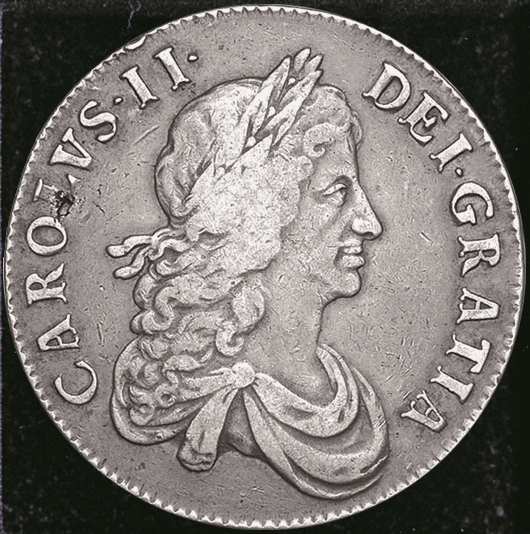
Charles II Crown
Crown coins weren’t struck regularly from silver until 1662 under Charles II – which is when all the previous denominations of gold coins were replaced by milled guineas.
Silver crown coins enter circulation…
The crown issued for circulation that year marked the end of hammered coins as the Royal Mint transferred to mill striking permanently after centuries of working by hand.
At this point the crown started to look more familiar, and it has remained roughly the same size (almost 30mm in diameter) to the present day.
The coins’ generous dimensions leant it an air of importance, and crowns were usually struck in a new monarch’s coronation year. This was true of every monarch since King George IV up until the present monarch in 1953, with the single exception of King George V.
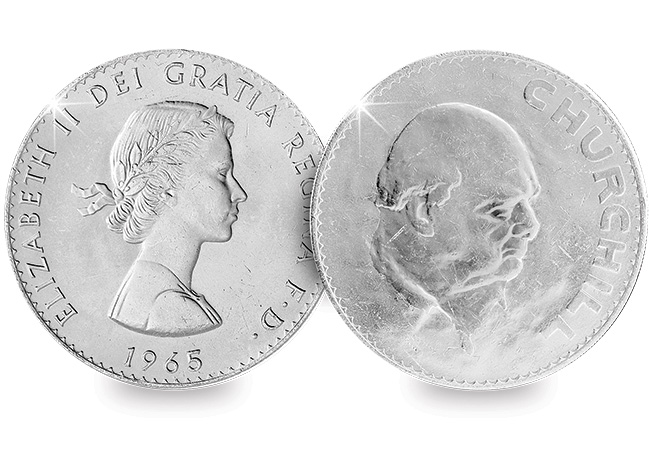
The 1965 Churchill Memorial Crown – the first crown coin to feature a non-monarch
With its large size, many of the later coins were primarily commemoratives. The 1965 issue carried the image of Winston Churchill on the reverse, the first time a non-monarch or commoner was ever placed on a British coin, and marked his death.
Decimalisation arrives…
Traditionally crowns had a face value of five shillings, but after decimalisation on 15th February 1971 the crown became the 25p coin – one of the UK’s most unusual denominations.
The 25p pieces were issued to commemorate significant events, with one of the earliest issues being the Silver Wedding Anniversary of Queen Elizabeth II and Prince Phillip in 1972.
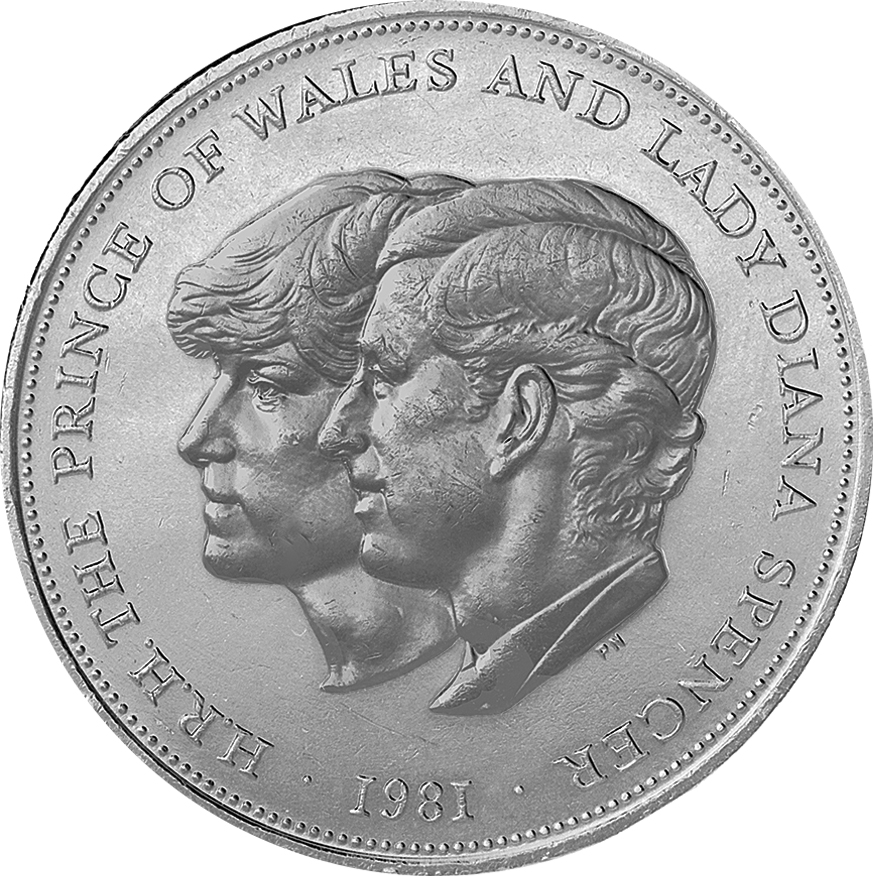
1981 Charles and Diana Wedding Crown
In 1980 an issue was authorised for the 80th birthday of Queen Elizabeth The Queen Mother; and, in 1981, the coin was issued to celebrate the marriage of Charles, Prince of Wales and Lady Diana Spencer. All of these issues were struck in large mintages, in plastic cases, and in cupro-nickel. However, in addition to this, limited numbers of collectors’ coins of these modern issues were struck to proof quality separately by the Royal Mint in sterling silver.
Legal tender changes from 25p to £5…
The legal tender value of the crown remained as 25p until 1990 when their face value was increased to £5 in view of its relatively large size compared to other coins.
Since the value increased to £5 in 1990 it quickly became recognised as the nation’s flagship commemorative coin and remained possible to buy these coins through banks and post offices (as well as the Royal Mint, The Westminster Collection and other distributors) in circulating quality right up until 2009.
Farewell to the face value £5 coin…
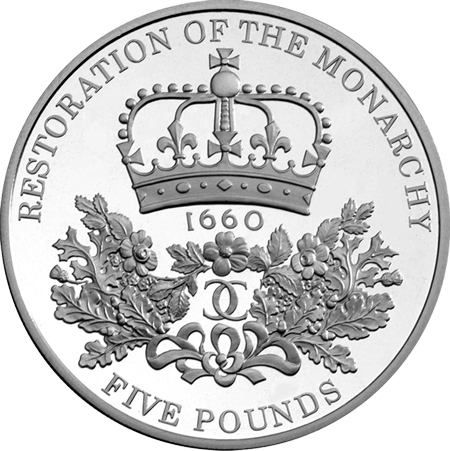
The last ever £5 for £5 crown coin – 2010 The Restoration of the Monarchy
£5 coins continued to be available for a couple more years at face value in brilliant uncirculated quality. But sadly, today the Royal Mint only releases £5 coins in presentation packs selling for £13.
The British crown has undoubtedly seen many changes throughout the years, from metals, size and denomination – it certainly is a coin with an interesting history.
What’s been the most significant change for you? Leave a comment below.
Sign the petition to bring back the £5 for £5 by clicking here
Discover how you can be one of just 1,000 collectors able to own the new 2016 UK Queen’s 90th Birthday £5 for £5 – click here.


